Abstract
1. The mechanism underlying the limited antiarrhythmic effects of beta-adrenoceptor blocking agents against occlusion-induced arrhythmias in acutely prepared, pentobarbitone-anaesthetized rats has been investigated. 2. Atenolol, ICI 111,581 and propranolol were given at low, medium and high doses calculated to shift dose-response curves to exogenous agonists by factors of 10-30, 100-300 and 1000-3000, respectively. 3. Arrhythmias, blood pressure, heart rate, ECG changes and serum K+ were measured. 4. Antiarrhythmic activity was seen with beta-blocker treatment. This was minimal with atenolol (0.1, 1 and 10 mg kg-1) and only statistically significant with the highest dose of ICI 111,581 (5 mg kg-1), and propranolol (10 mg kg-1). 5. Treatment with beta-adrenoceptor blockers elevated serum potassium concentrations, as compared with saline controls, especially when measured at 30 min post-occlusion. 6. Only ICI 111,581 (5 mg kg-1) and propranolol (1 and 10 mg kg-1) prolonged P-R interval. 7. In order to evaluate possible mechanisms of antiarrhythmic action, attempts were made to correlate antiarrhythmic activity with beta-blockade, serum potassium concentrations, and/or with changes in the P-R interval of the ECG. 8. Reductions in arrhythmias did not correlate well with presumed beta-blockade. Better correlation was obtained with elevations of serum potassium concentration, and with prolongation of P-R interval (a presumed Class I antiarrhythmic action). 9. These results suggested that antiarrhythmic effects of adrenoceptor blocking agents in acutely-prepared anaesthetized rats, subjected to occlusion of a coronary artery, are unrelated to cardiac beta-blockade. The limited antiarrhythmic effects which were observed could be attributed to elevations in serum potassium concentration (due to peripheral beta-blockade) and/or possible Class I antiarrhythmic actions.
Full text
PDF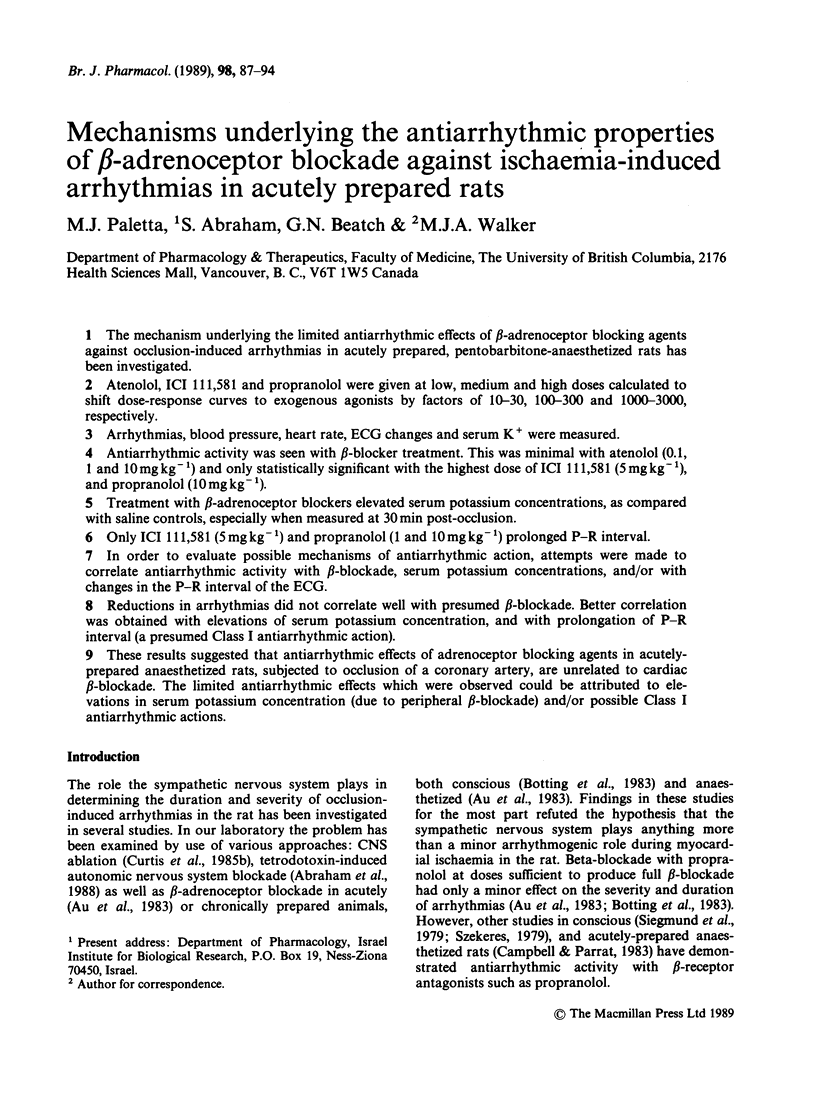
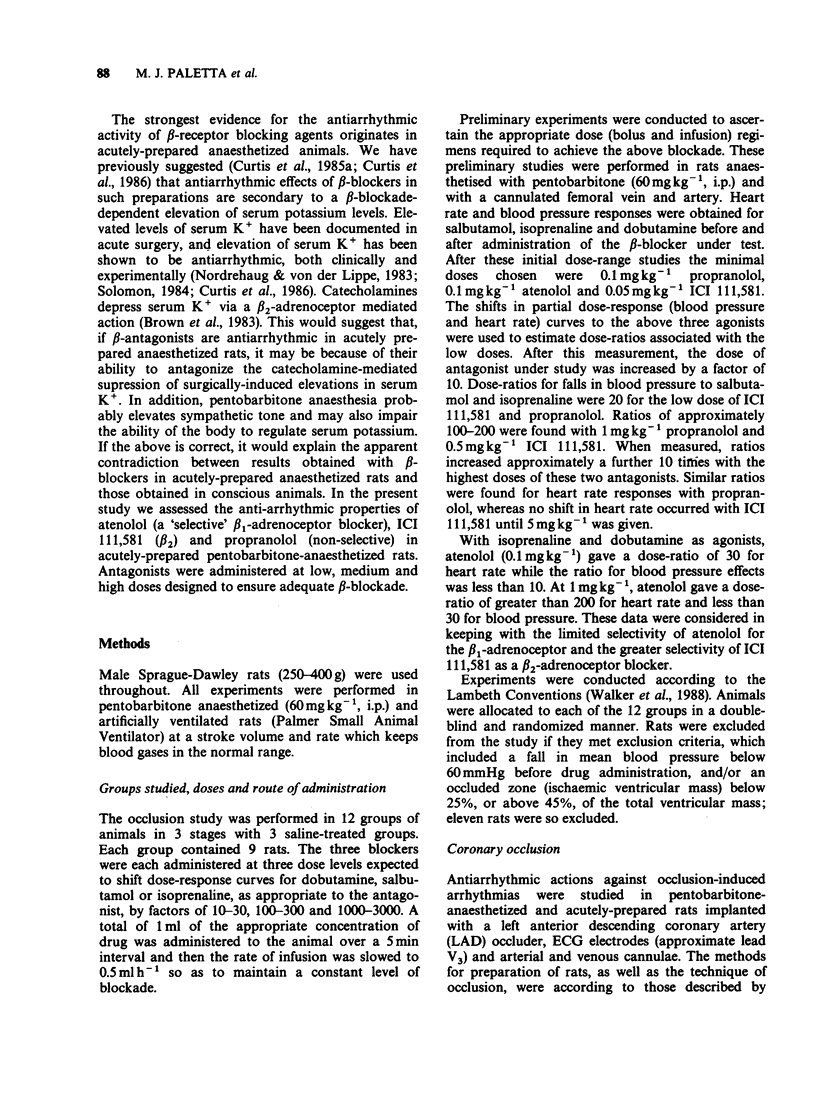
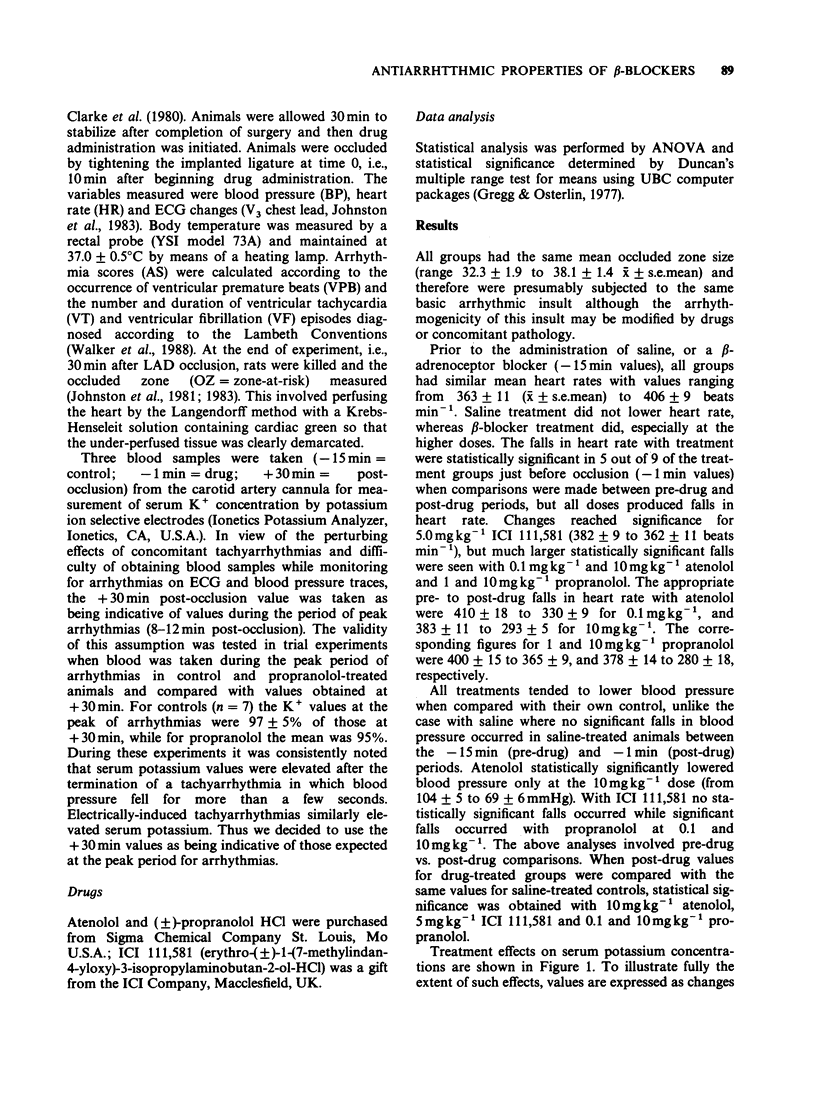
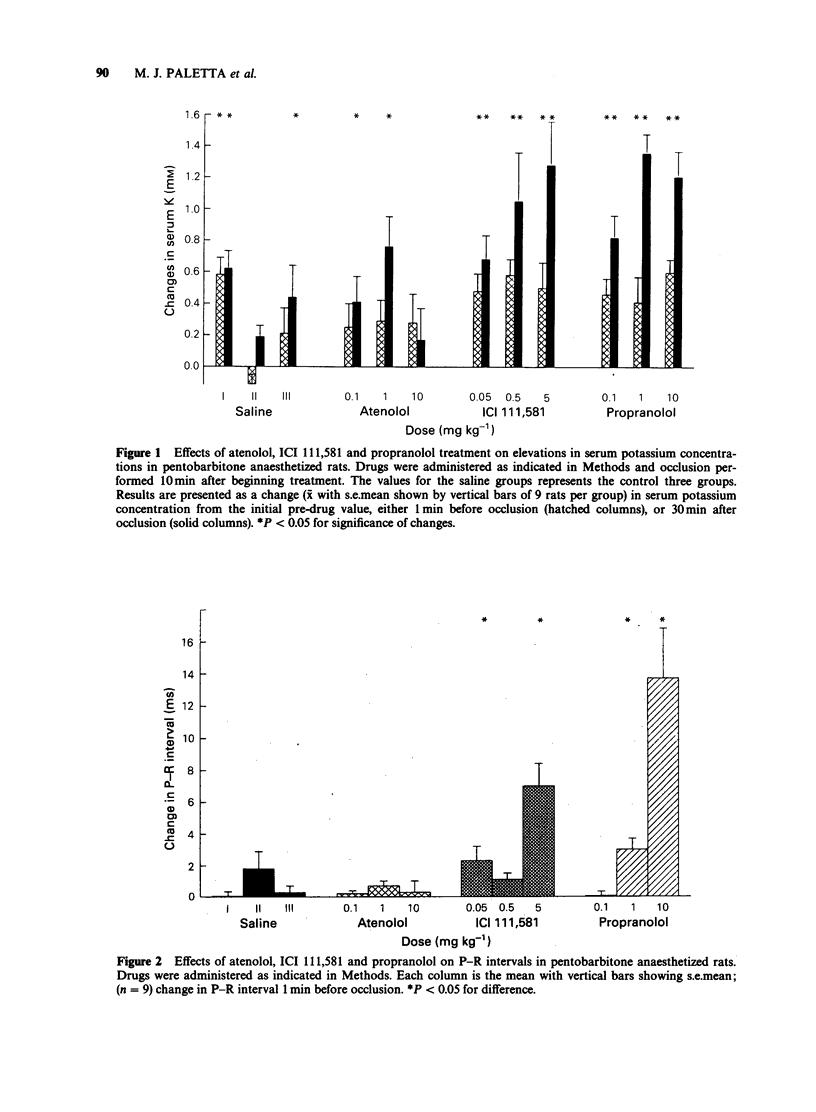
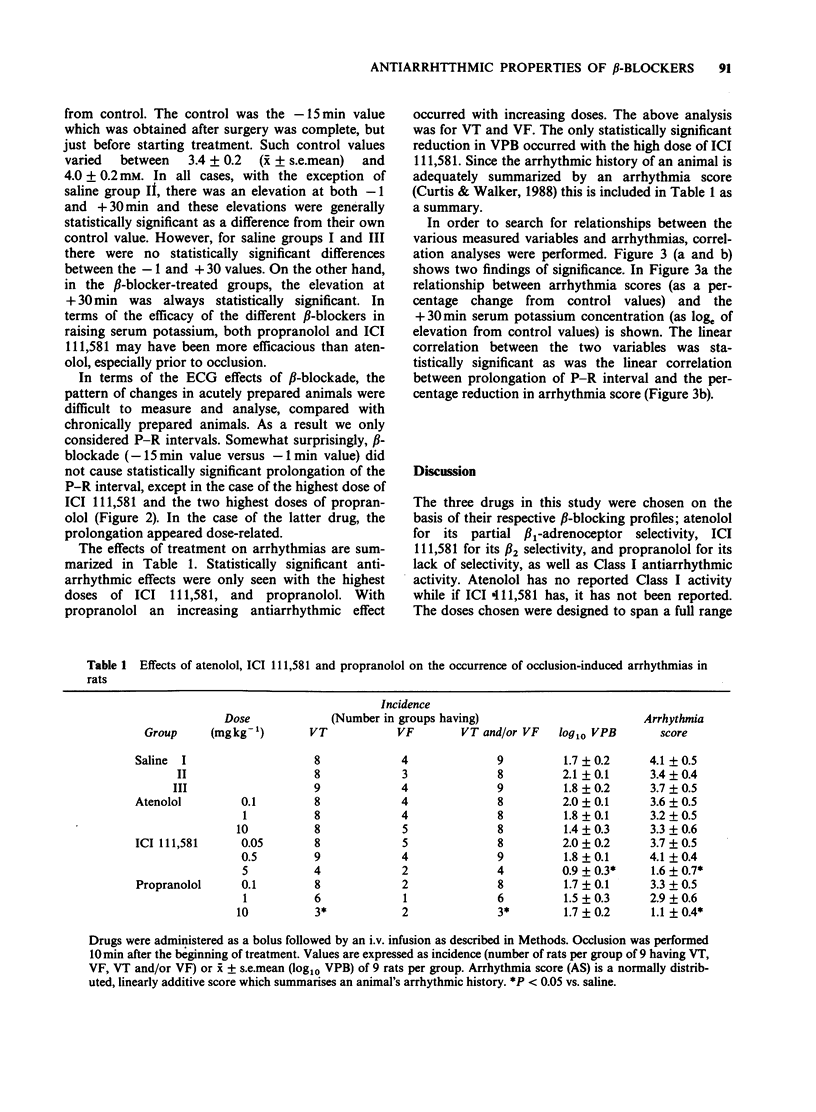
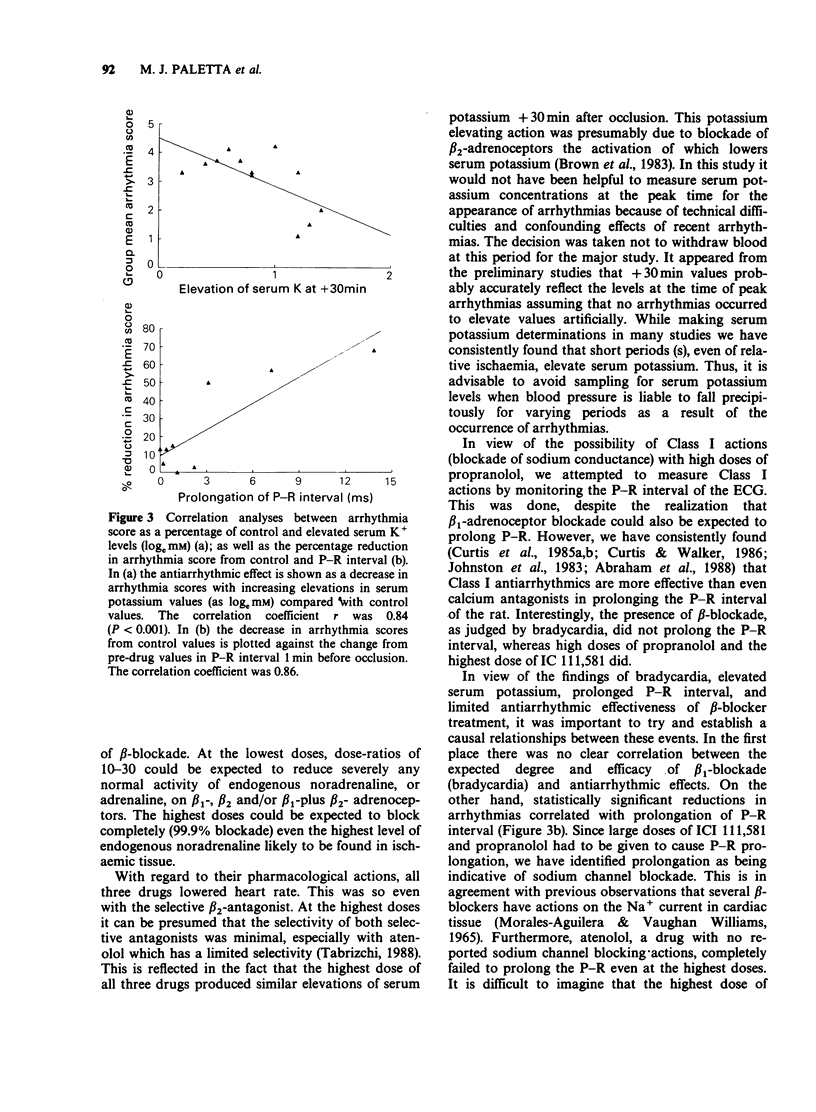
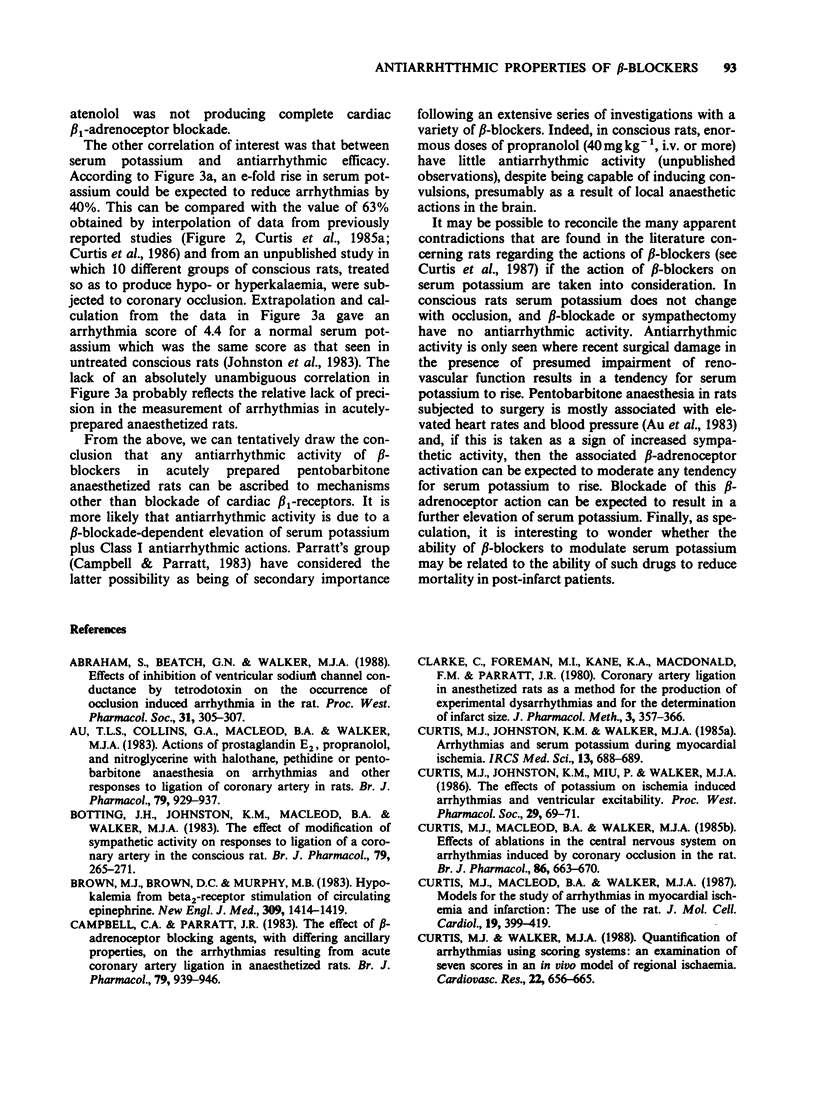
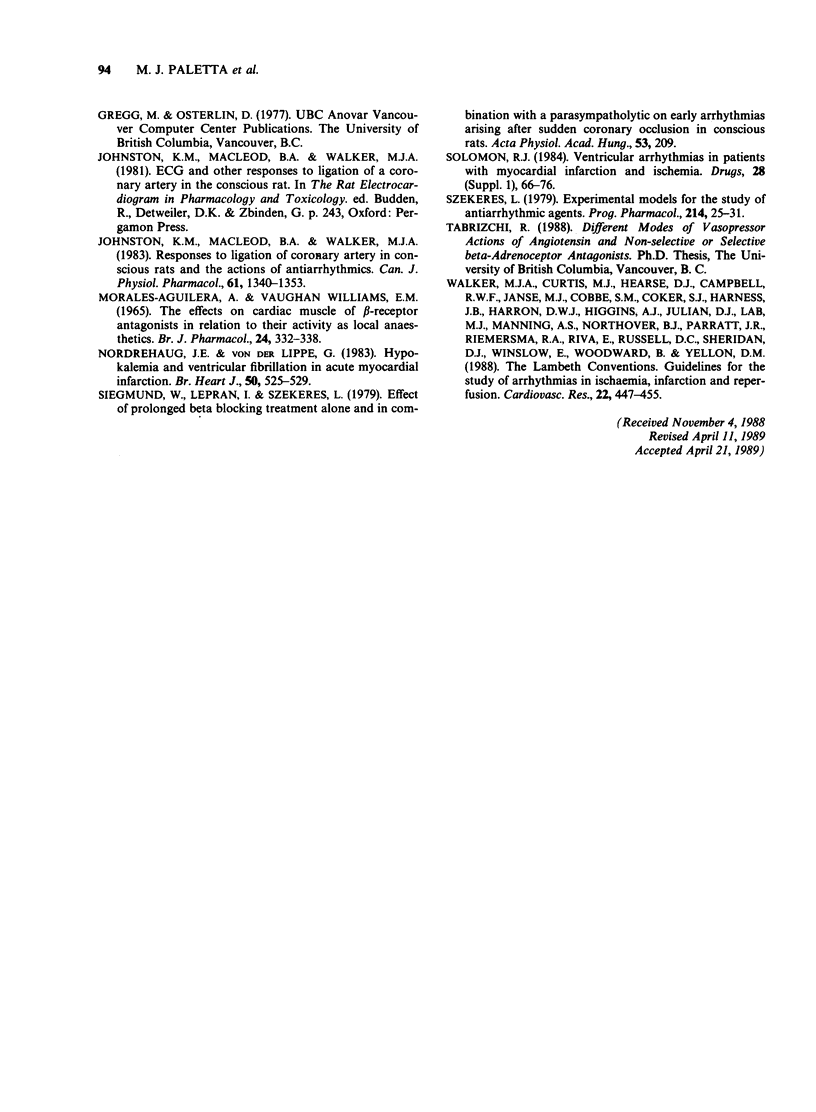
Selected References
These references are in PubMed. This may not be the complete list of references from this article.
- Abraham S., Beatch G. N., Walker M. J. Effects of inhibition of ventricular sodium channel conductance by tetrodotoxin on the occurrence of occlusion induced arrhythmia in the rat. Proc West Pharmacol Soc. 1988;31:305–307. [PubMed] [Google Scholar]
- Au T. L., Collins G. A., Macleod B. A., Walker M. J. Effects of prostaglandin E2, propranolol and nitroglycerine with halothane, pethidine or pentobarbitone anaesthesia on arrhythmias and other responses to ligation of a coronary artery in rats. Br J Pharmacol. 1983 Aug;79(4):929–937. doi: 10.1111/j.1476-5381.1983.tb10538.x. [DOI] [PMC free article] [PubMed] [Google Scholar]
- Botting J. H., Johnston K. M., Macleod B. A., Walker M. J. The effect of modification of sympathetic activity on responses to ligation of a coronary artery in the conscious rat. Br J Pharmacol. 1983 May;79(1):265–271. doi: 10.1111/j.1476-5381.1983.tb10520.x. [DOI] [PMC free article] [PubMed] [Google Scholar]
- Brown M. J., Brown D. C., Murphy M. B. Hypokalemia from beta2-receptor stimulation by circulating epinephrine. N Engl J Med. 1983 Dec 8;309(23):1414–1419. doi: 10.1056/NEJM198312083092303. [DOI] [PubMed] [Google Scholar]
- Campbell C. A., Parratt J. R. The effect of beta-adrenoceptor blocking agents, with differing ancillary properties, on the arrhythmias resulting from acute coronary artery ligation in anaesthetized rats. Br J Pharmacol. 1983 Aug;79(4):939–946. doi: 10.1111/j.1476-5381.1983.tb10539.x. [DOI] [PMC free article] [PubMed] [Google Scholar]
- Clark C., Foreman M. I., Kane K. A., McDonald F. M., Parratt J. R. Coronary artery ligation in anesthetized rats as a method for the production of experimental dysrhythmias and for the determination of infarct size. J Pharmacol Methods. 1980 Jun;3(4):357–368. doi: 10.1016/0160-5402(80)90077-7. [DOI] [PubMed] [Google Scholar]
- Curtis M. J., Macleod B. A., Walker M. J. Models for the study of arrhythmias in myocardial ischaemia and infarction: the use of the rat. J Mol Cell Cardiol. 1987 Apr;19(4):399–419. doi: 10.1016/s0022-2828(87)80585-0. [DOI] [PubMed] [Google Scholar]
- Curtis M. J., Macleod B. A., Walker M. J. The effects of ablations in the central nervous system on arrhythmias induced by coronary occlusion in the rat. Br J Pharmacol. 1985 Nov;86(3):663–670. doi: 10.1111/j.1476-5381.1985.tb08943.x. [DOI] [PMC free article] [PubMed] [Google Scholar]
- Curtis M. J., Walker M. J. Quantification of arrhythmias using scoring systems: an examination of seven scores in an in vivo model of regional myocardial ischaemia. Cardiovasc Res. 1988 Sep;22(9):656–665. doi: 10.1093/cvr/22.9.656. [DOI] [PubMed] [Google Scholar]
- Johnston K. M., MacLeod B. A., Walker M. J. Responses to ligation of a coronary artery in conscious rats and the actions of antiarrhythmics. Can J Physiol Pharmacol. 1983 Nov;61(11):1340–1353. doi: 10.1139/y83-193. [DOI] [PubMed] [Google Scholar]
- MORALES AGUILERA A., VAUGHANWILLIAMS E. M. THE EFFECTS ON CARDIAC MUSCLE OF BETA-RECEPTOR ANTAGONISTS IN RELATION TO THEIR ACTIVITY AS LOCAL ANAESTHETICS. Br J Pharmacol Chemother. 1965 Apr;24:332–338. doi: 10.1111/j.1476-5381.1965.tb01719.x. [DOI] [PMC free article] [PubMed] [Google Scholar]
- Nordrehaug J. E., von der Lippe G. Hypokalaemia and ventricular fibrillation in acute myocardial infarction. Br Heart J. 1983 Dec;50(6):525–529. doi: 10.1136/hrt.50.6.525. [DOI] [PMC free article] [PubMed] [Google Scholar]
- Solomon R. J. Ventricular arrhythmias in patients with myocardial infarction and ischaemia. Relationship to serum potassium and magnesium. Drugs. 1984 Oct;28 (Suppl 1):66–76. doi: 10.2165/00003495-198400281-00007. [DOI] [PubMed] [Google Scholar]
- Walker M. J., Curtis M. J., Hearse D. J., Campbell R. W., Janse M. J., Yellon D. M., Cobbe S. M., Coker S. J., Harness J. B., Harron D. W. The Lambeth Conventions: guidelines for the study of arrhythmias in ischaemia infarction, and reperfusion. Cardiovasc Res. 1988 Jul;22(7):447–455. doi: 10.1093/cvr/22.7.447. [DOI] [PubMed] [Google Scholar]


